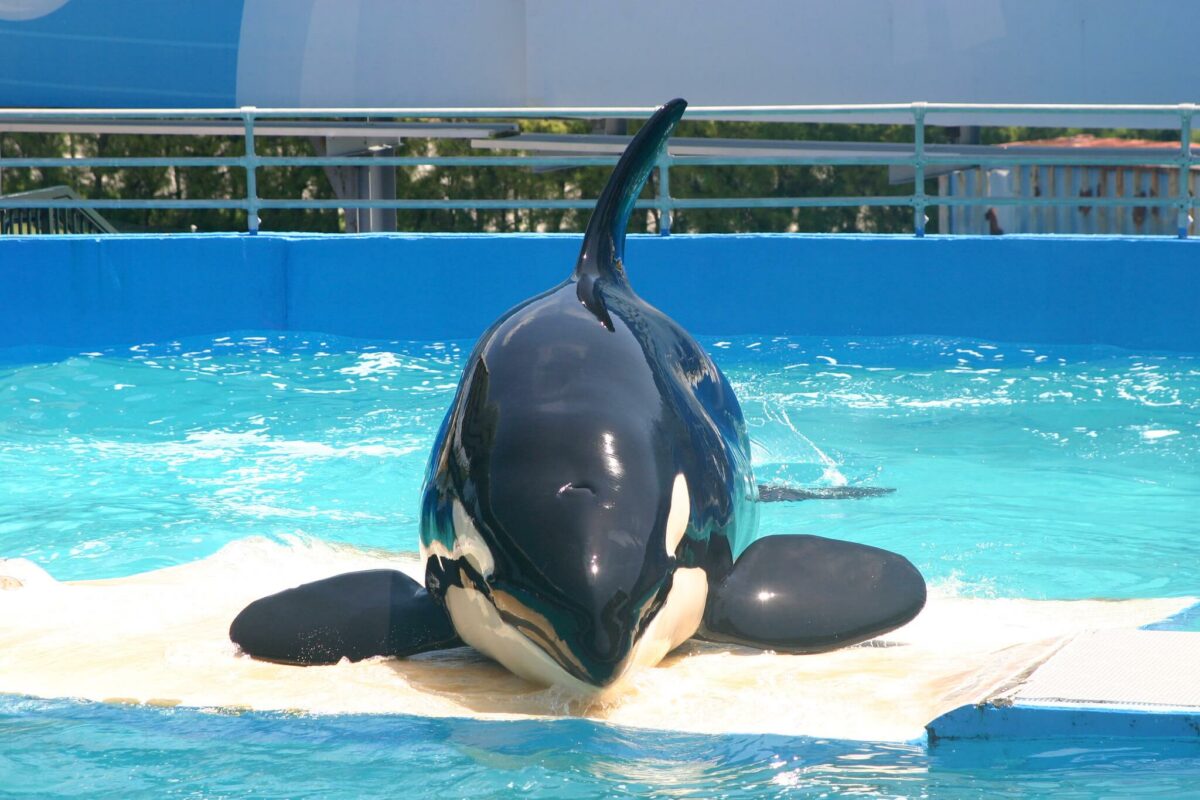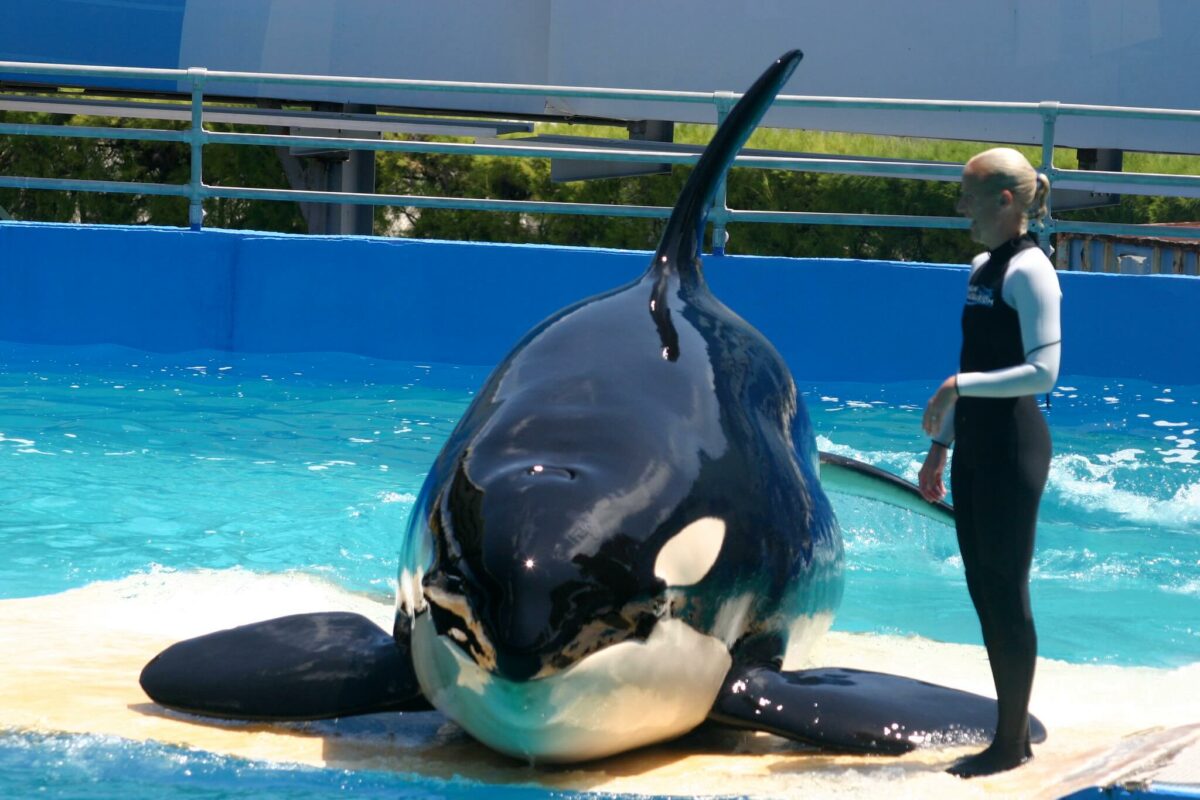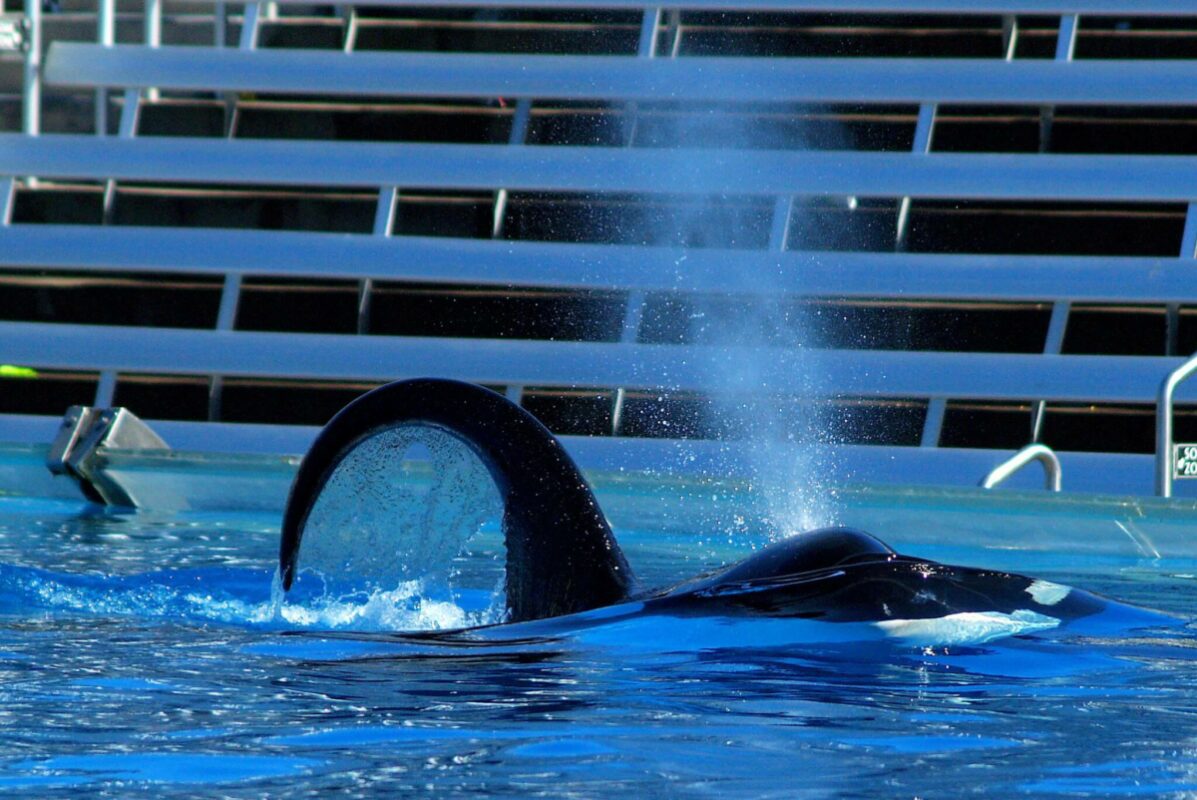Orcas are some of the most interesting animals in the ocean, they’re powerful apex predators that work together to take down prey big or small.
Often living in pods of up to 5 to 30 individuals, killer whales use sophisticated hunting techniques to ensure the survival of themselves and their pod.
With a menacing black-and-white appearance and a dorsal fin that can stand 6 feet tall, orcas can look frightening to many, but surprisingly, they’re not dangerous to humans in the wild.
Many people have noticed that in some orcas, the dorsal fin appears to be bent or curved over, and there is a lot of speculation as to why this happens.
In this post, we’re going to take a closer look at the orca’s dorsal fin and specifically answer the common question, why do orcas fins bend?
Continue reading as we explore various theories and scientific evidence as to why this mysterious phenomenon happens in some orcas.
Why Do Orcas Fins Bend?
Contrary to popular belief, the bending of dorsal fins in orcas has been observed in both wild and captive populations.
There’s still a lot of debate as to why this happens, but biologists think there are several reasons which cause this phenomenon.
What we know is that the fins bend due to the collagen in the dorsal fins breaking down, with a leading theory being that water temperature can disrupt collagen structure and rigidity.
This may explain why orcas in captivity seem to have bent fins more often than those in the wild, as the water temperature in their tanks is regulated, whereas in the wild it varies based on location.
Another theory is that the orca’s swimming speed impacts its dorsal fin.
In the wild, orcas can reach speeds of up to 56km/h, and at these speeds, there’s a significant force against the fin which could help it remain straight and upright.
Whereas in captivity, orcas don’t have the ability to reach these speeds in an enclosed tank, so their fins become droopy.
It’s also thought that the cause of orcas having bent fins could simply be due to natural selection, similar to how humans have differently shaped ears, mouths, and noses.

Some orcas may naturally have weaker or more flexible collagen in their dorsal fins causing them to bend at times.
In captivity, orcas with bent fins are much more common, which has led to the theory that the stress of captivity and little room for swimming may contribute to the dorsal fin bending.
It’s still a mystery as to why orcas’ fins bend, and there’s still a lot of research that needs to be done to conclude why it happens.
The truth is, we don’t know the exact cause of it, and everything mentioned above is pure speculation and theory from experts.
Is It Normal For An Orca To Have A Bent Fin?
It is normal for orcas to have bent or curved dorsal fins, and whilst the cause is still unknown it’s thought to be a natural process that happens to both wild and captive orcas.
In some populations of orcas, up to 100% of the males can have bent or curved dorsal fins, therefore, it’s hard to put this down to any kind of health problem or abnormality.
That said if the bent dorsal fin is accompanied by other behavioral changes then it may be a sign that something is wrong and needs further investigation.
Why Do Orcas Fins Droop In Captivity?
Here at MarinePatch, we are strongly of the opinion that orcas do not belong in captivity, and should be roaming the oceans in their natural habitat.
What is known is that orcas’ fins bend and droop more in captivity than they do in the wild, suggesting that it’s being placed in captivity that is causing the bent dorsal fin.
As we don’t know why orcas’ fins droop both in the wild and in captivity, it’s hard to provide any conclusive answers to this question, but there are three main theories.
Stress
The first is stress, which makes complete sense. Captive orcas experience a lack of physical exercise, drastic diet changes, and cramped living conditions.
Of course, stress will build up and they will start feeling the effects of being in captivity.
Orcas that have been taken away from their pods and placed into an Olympic-sized swimming pool all alone and then used for entertainment will no doubt feel stress.
This is thought to play a role in the collapse of their dorsal fins.
Low blood pressure
The inability to move or swim very fast in the orca’s tanks is thought to lead to lower blood pressure which may cause the dorsal fin to bend.

Captive orcas do not get anywhere near the physical exercise that they would in the wild, which may impact their bodily functions.
Overheating collagen
Another interesting theory of why orcas’ fins bend is due to an overheating of collagen in their dorsal fin.
This happens because, in captivity, orcas don’t get to dive very deep and are always at the surface where they are exposed to more sun.
In the wild, orcas are most abundant in the icy waters of Alaska, Russia, and Antarctica, but in captivity, they are almost always in hot, sunny resorts.
This overexposure to sunlight and heat may play a part in why orcas dorsal fins bend.
Wrapping Up
The bending of orcas’ fins is a natural phenomenon that we still don’t have any definitive answers to as of yet.
Whilst there are many convincing theories, it’s still undetermined as to why orcas’ fins bend both in captivity and in the wild.
What’s for certain is that is happens MUCH more in captivity than it does in the wild, with most captive male orcas and some females having bent dorsal fins.
Sunlight exposure, lack of exercise, diet changes, inability to swim at full speed, and stress are all theories that make a lot of sense as to why this happens.
However, until we continue researching this topic and learn more about orcas and their bodies we will never know the truth.
Thanks for taking the time to read this post and learning more about orcas, I hope you have enjoyed this post.
See you next time.

Hi, I’m George – the founder of MarinePatch. I created this blog as marine wildlife has been my passion for many years. I’ve spent over a decade in the marine wildlife industry and spent years out in the field conducting research. In today’s modern world, an online blog is the best place for me to share my findings and reach as many people as possible to help educate and inspire others. Enjoy your time here and you’re welcome back anytime!

